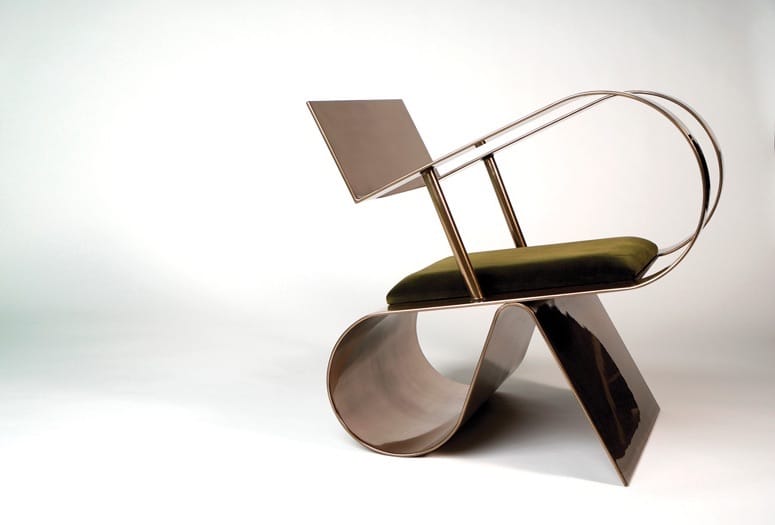
“I have always admired designers who value the potential of their own intuition and who are not afraid to pursue novel ideas,” says Los Angeles–based designer Jason Mizrahi. “Frank Gehry is the first architect who showed me the possibilities of thinking intuitively. Seeing Bilbao [Spain] for the first time inspired me to sketch without constraints, and I began to view things not for what they are but for what they can become.”
Merging the art of furniture making and sculpture, his namesake Jason Mizrahi Designs creations are minimal compositions of fluid forms, defined by proportion and a rebellious nature. Mizrahi recently debuted a modern luxury furniture line at WestEdge Design Fair in Santa Monica, but it was his collection dubbed “The Limited” that earned his place on the design radar; shown to the industry and press from Milan to Miami, the pieces aim to challenge perception.
“One typically perceives a chair as something that has four legs, is linear, structured, and solid,” Mizrahi says. “These are intended to be statement pieces that break free from any restrictions and convention. Each is an attempt to attain the perfect balance between form and function, art and design, negative and positive space. Elements of movement, dance, sculpture, and continuity are infused into each design.”
Mizrahi’s Symphony Chair took the American Society of Interior Design’s Best Innovative Product Design honor in 2017. (The chairs are surprisingly comfortable, he asserts, and clients do use them.)
“I’m still very passionate about architecture,” he adds. But graduating from Pratt Institute at the height of the recession when opportunities were scarce led him to channel his educational training elsewhere. “Due to the drastic reduction in scale from buildings to chairs, furniture design has provided a creative freedom you don’t see in architecture. I would like each piece to elicit excitement at the unpredictability of the form.”